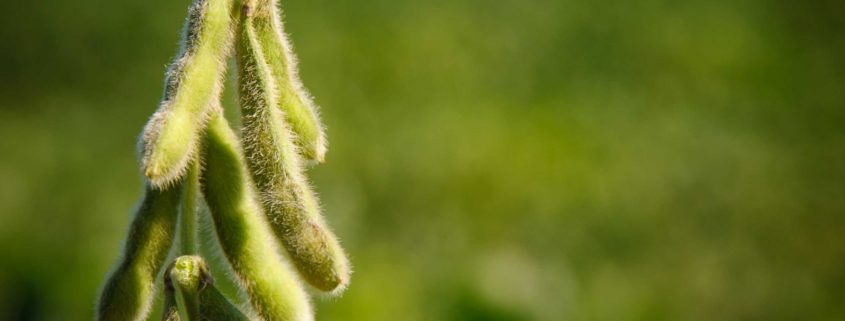U.S. soybean growers intensify specialty soybean commitment for world customers
As demand for plant protein increases, soybean trends also reflect an increased demand for non-GMO and organic U.S.-grown soybeans. With soy reigning as the preferred plant protein, the industry is responding with enthusiasm.
Meeting Market Demands for U.S. Specialty Beans
According to Aaron Skyberg, International Sales Director of Healthy Food Ingredients, meeting market demands means offering the best variety of specialty soybeans —including non-GMO and organic—for farmers and customers alike. To that end, Skyberg says, “We are working with third party soybean breeders. Our goal is to have the best yielding, best agronomical, pest resistant and quality soybean possible. It doesn’t happen overnight…. it takes three to four years, but we are making good progress.”
Healthy Food Ingredients, based in Fargo, North Dakota, draws on its growers’ multi-generational expertise and respect for the land. Skyberg explains, “We contract directly with farmers. We look at it as a strong partnership; we both have to be successful—with a good return on investment (ROI) for farmers, and quality that pleases our customers.” The company contracts with soybean farmers located in North Dakota, South Dakota, Minnesota, Wisconsin, Iowa, Illinois, Missouri, Kansas and Arkansas.
One of the farmers working with Healthy Food Ingredients is Lynn Brakke, a farmer with 40 years of experience, who farms 2,350 acres on a Moorhead, Minnesota, family farm started by his grandfather. Brakke’s son is now working with him, too, along with three other employees and seasonal part-time help when necessary. Brakke says he is looking for his farm to become more efficient rather than grow larger, and he has been successful in that quest. His yields and ROI are better than ever, and he’s optimistic about what the next decade will bring. Like most of Healthy Food Ingredients’ farmers, he stores the soybeans he grows on his farm until they are needed. He says his spring work will begin on May 1st, and for him, that date can’t come fast enough.
Specialty Soybean Plans for 2019
Regarding 2019, Skyberg says spring planting is on par with last year, and that contracts with specialty soybean (non-GMO) farmers will be in place by mid-March. Demand is increasing, especially for whole soybeans. Color and protein remain important qualities.
“Specialty soybeans, non-GMO, are selling in North Asia, Southeast Asia and Europe. They’re being used for tofu, miso, natto, tempeh, soymilk and soy sauce. In the U.S., we sell mostly organic soybeans, used for soymilk and soy sauce,” he adds.
Brakke is one of the farmers who grow organic soybeans. When he switched to all-organic crops in 1993, he didn’t know of another farmer doing that, and located the soybean markets for his own crop. At that point, Brakke says, organic rules were quite rigid on crop rotation, and there was not much marketing available. For a number of years, he grew and sold soybeans for natto, miso, soymilk and tofu, working through a broker who sold to Japan. Currently, he grows large graded soybeans used for tofu and soymilk, and sells them domestically.
Connecting Soy Consumers with the People Behind the Beans
By introducing global customers to the people behind their food, the U.S. Soybean Export Council (USSEC) connects U.S. soybean growers, producers, distributors and manufacturers with the world. As part of its public education initiative, USSEC also provides updates on soybean research, trends, and the various global markets.
For Skyberg, who also serves on the USSEC board of directors, connecting with customers often happens in person. He estimates that he travels for six to eight weeks a year, working with farmers. In addition, he makes regular visits to customers, spending one to two weeks at a time with overseas customers.
Brakke says he feels like he’s in his element on the farm, and loves what he does.
“I can’t imagine doing anything else. I believe in the organic model; it didn’t take long to see the wisdom in the system.”
Brakke only eats organic food, including soyfoods like veggie burgers and tofu, as well as soy that is included in various food items. Like many others who are increasing their consumption of plant protein, he has reduced the amount of meat he eats. And, like those who have helped make soy the preferred plant protein, he sees a strong and positive future for soy protein.







Leave a Reply
Want to join the discussion?Feel free to contribute!